|
ROVERS
The next century will see an explosion in the use of Robot Vehicles, on Earth, in space and under the sea. They can go to places it is too dangerous or too expensive to send people, and if small can get into places no person could ever venture.
Space robot rovers have been in use since the nineteen-seventies.
All rovers face similar technical challenges
- They need to send images back to their controller so he or she can see where they are going.
- They need to be stable so they don't turn over.
- They need be able to escape if they get stuck.
- They need to carry sensors and send back the data gathered.
- They need an independent power supply.
Space robots also pose another problem. Distance. There is a time delay between when the controller sends a command signal and the time the camera image shows that the command is carried out.
With the Moon, allowing for transit and processing time, the delay is six seconds. With Mars, though, the delay is up to twenty minutes, depending on how far Mars is away from Earth.

Lunokhod - The First Robot Rover in Space
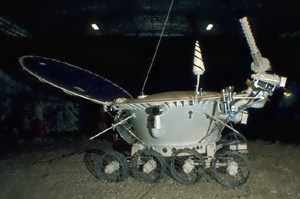
The former USSR (Soviet Union) had ben exploring our Moon since 1959, by fly-bys and hard-landings of unmanned space probes. Then in 1970, the robot Luna-16 soft-landed and scooped up some lunar rock samples which it sent back to Earth. Then Luna-17 was sent to land on the Moon and, on November 17th 1970, the first off-Earth robotic rover, Lunokhod-1 made its way slowly across the surface. Lunokhod-1 worked for almost a year until its isotope heat source gave out, investigating an area in the Sea of Rains. It transmitted photographs, scientific data about the soil and structure of the Moon, and data on cosmic rays and the X-ray radiation of other celestial bodies.
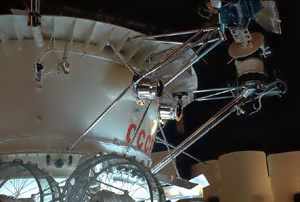
The self-propelled moon rover, Lunokhod-1, weighed 756 kg and was made up of two parts - the instrument bay and the wheeled chassis. The lid seen in the photograph had a dual purpose. When open during the day, it was used as a cooling radiator; but when closed at night it was an insulator to keep the instrument bay from freezing. On the inside of the lid there were solar battery cells, that charged the batteries during daylight.
The two port-holes had tv cameras inside to give a stereoscopic view out of the front of the rover, these were used for steering the rover from Earth. There was an antenna to transmit the tv pictures back to Earth, and another to receive commands and return data. The radio signals took 2.6 seconds to travel from Earth to the Moon and back again. Then mission control would have to decide on the next move, so it took about five seconds for each movement of the rover to take place. On either side of the rover were pairs of telephoto cameras with their associated antennae. by the end of the eleven months, the cameras had taken 20,000 pictures and 200 panoramic scans. Chemical analysis was carried out on the soil at 25 points along the route, which covered a total of ten and half kilometres and an area of 80,000 square metres.

The Lunar Rover
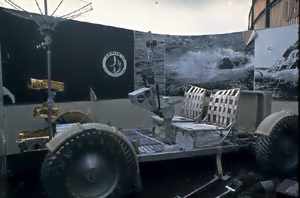
The United States also had a rover buggy during the Apollo Program, but it was for carrying men - the Lunar Rover. It was very successfully used on the last three Apollo Missions.

Sojourner
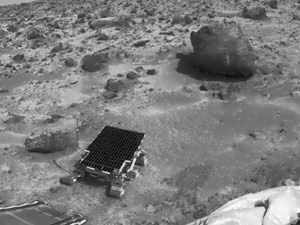
In July 1997 the Pathfinder Mission landed on Mars. This carried one of a new generation of miniature robot rovers, originally called the Rocky series. This, the first Mars rover, was named Sojourner and it explored the area around its landing site. The full story is at the NASA Mars Pathfinder Web site.

Space Robot Rovers under Development
Several rovers of various sizes are under development in the USA, Russia, Europe and Japan. Here are sites where you will find out more.
NOMAD - Under development for NASA by The Nomad Rover
MARSOKHOD - Joint US/Russia project Marsokhod
ROCKY 7 - A Rocky series development for Surveyor 2001

Educational Rovers
You too can become involved in making Robot Rovers. They are excellent teaching aids for control technology and design.
Here are a few.
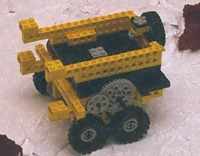 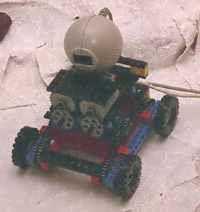
Construction kits are always useful.
These rovers were built at Giffard Park School in Milton Keynes, UK

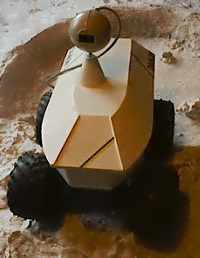 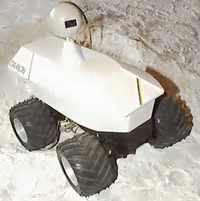
DAMON - Based on NASA's NOMAD Rover concept
Built by The Orbital Mechanics Educational Network
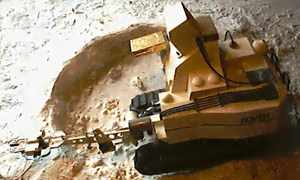
ROVER - A tracked vehicle fitted with a robot arm
Built by The Orbital Mechanics Educational Network
|













